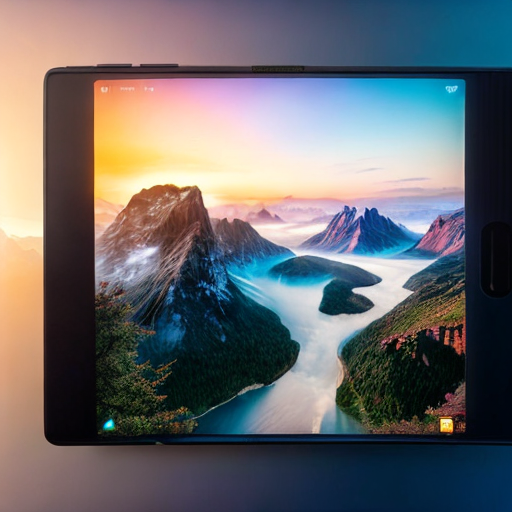The Programming Languages Behind Apple’s Innovations
Introduction to Apple’s Programming Language Landscape
Welcome to the wild and wacky world of Apple’s programming language landscape! It’s like a colorful carnival filled with coding wonders and peculiarities. Apple, being the tech giant that it is, has its own unique lineup of languages that would make any programmer’s head spin. Swift, their star attraction, is a sleek and modern language that’s as fast as a cheetah on roller skates. Then we have Objective-C, the seasoned veteran who’s been around since the dawn of Apple’s development era. And let’s not forget about good old C++, the reliable workhorse that keeps everything running smoothly behind the scenes. So, whether you’re a Swift enthusiast or an Objective-C aficionado, Apple’s programming language landscape has something for everyone. Just remember to buckle up and enjoy the ride!
Swift – Apple’s Preferred Language for App Development
Apple primarily uses two programming languages: Objective-C and Swift. Objective-C was the main programming language used by Apple for many years, especially for developing iOS and macOS applications. However, in 2014, Apple introduced Swift, a new programming language designed to be more modern, safe, and efficient. Interestingly, Swift was developed by Apple itself and was intended to replace Objective-C gradually. It was designed to make programming for Apple platforms more accessible and enjoyable, with its concise syntax and powerful features. Swift quickly gained popularity among developers due to its simplicity and performance, and it is now the preferred language for developing iOS, macOS, watchOS, and tvOS applications. Although Swift is widely used within Apple, Objective-C still plays a significant role. Many existing Apple frameworks and libraries are written in Objective-C, and developers often need to work with both languages when maintaining or updating older codebases. However, Apple continues to invest in Swift’s development, regularly releasing updates and improvements, ensuring its continued growth and adoption within the Apple ecosystem.
Step right up and prepare to be amazed by Swift, Apple’s preferred language for app development! This dynamic and versatile language has taken the programming world by storm, leaving other languages green with envy. With its clean syntax and powerful features, Swift makes developing apps a breeze, like a gentle summer breeze that whispers sweet nothings into your code. It’s no wonder that Apple has embraced Swift with open arms, making it the go-to language for creating innovative and user-friendly apps. So, whether you’re a seasoned developer or just starting your coding journey, Swift is the ticket to unlocking a world of endless possibilities in the Apple ecosystem. Get ready to dive into the Swift pool and make a splash in the app development scene!
Objective-C – The Legacy Language Still in Use by Apple

In the vast realm of Apple’s programming language landscape, one language stands as a testament to the company’s rich history: Objective-C. Often referred to as the ‘legacy language,’ Objective-C has been a cornerstone of Apple’s development ecosystem for decades. Despite the rise of newer languages like Swift, Objective-C continues to hold its ground and remains in use by Apple to this day.
Originally developed in the early 1980s, Objective-C has witnessed the evolution of Apple’s software and hardware over the years. It has played a vital role in the creation of iconic products like the Macintosh and iOS devices. While some may view Objective-C as a relic of the past, it still serves a purpose in maintaining compatibility with older codebases and frameworks.
One of the key reasons Objective-C has endured is its seamless integration with Apple’s frameworks and APIs. Many of Apple’s core technologies, such as Cocoa and Cocoa Touch, were built with Objective-C in mind. This makes it an essential language for developers working on legacy projects or maintaining existing apps.
Despite its age, Objective-C continues to have a dedicated community of developers who appreciate its unique features and quirks. Its dynamic nature allows for powerful runtime capabilities, making it suitable for certain types of applications. Additionally, Objective-C’s extensive library of third-party resources and documentation ensures that developers can find support and solutions to their coding challenges.
While Swift has become Apple’s preferred language for app development, Objective-C remains an integral part of the Apple ecosystem. It serves as a bridge between the past and the present, allowing developers to leverage existing code while embracing newer technologies. So, whether you’re a seasoned Objective-C enthusiast or a curious newcomer, this legacy language still holds its place in the ever-evolving world of Apple programming.
Other Programming Languages in Apple’s Arsenal: C
Apple primarily uses two programming languages: Objective-C and Swift. Objective-C was the main programming language used by Apple for many years, especially for developing iOS and macOS applications. However, in 2014, Apple introduced Swift, a modern and more user-friendly programming language. Swift quickly gained popularity and is now the preferred language for developing applications for Apple’s platforms. It is designed to be safe, fast, and expressive, making it easier for developers to write clean and efficient code.
In Apple’s vast arsenal of programming languages, one language that deserves a special mention is good old C. While it may not be as flashy or trendy as Swift, C remains a fundamental language that forms the backbone of Apple’s software and hardware. From low-level system programming to optimizing performance-critical code, C is the go-to language for Apple engineers. Its efficiency, portability, and close-to-the-metal capabilities make it an essential tool for crafting robust and reliable software that powers Apple’s devices. So, while Swift may steal the spotlight, let’s not forget the enduring presence of C in Apple’s programming language landscape.
Corey is a charismatic man with an infectious sense of humor, making him a popular figure in the blogging community. With a passion for coding, he effortlessly combines his technical expertise with his witty writing style, captivating readers from all walks of life. Corey's blog is a treasure trove of coding tips, tricks, and tutorials, sprinkled with his trademark humor that keeps his audience engaged and entertained. Whether he's unraveling complex algorithms or sharing hilarious anecdotes from his coding adventures, Corey's unique blend of wit and expertise makes him a must-follow blogger for anyone interested in the world of coding.








